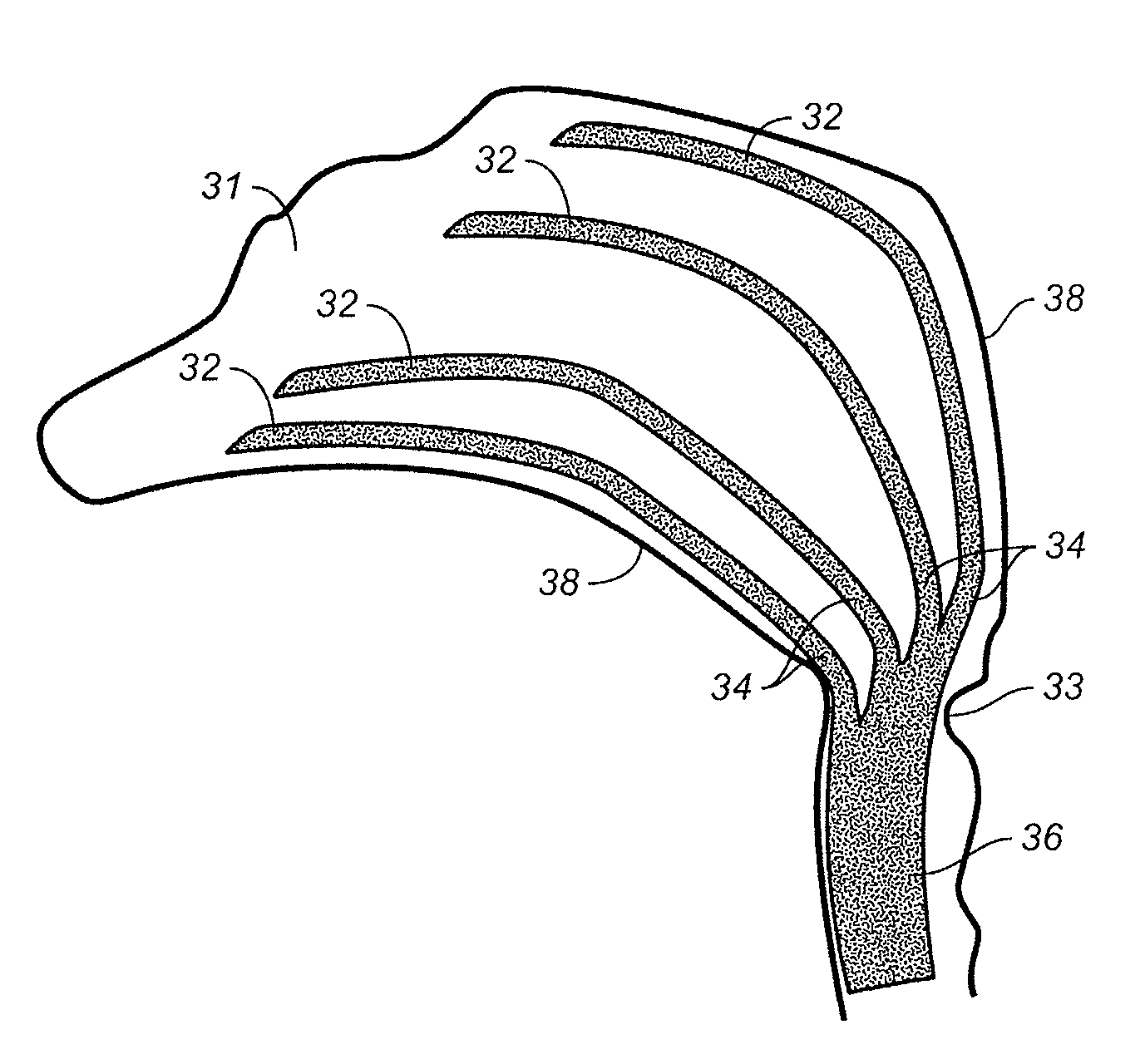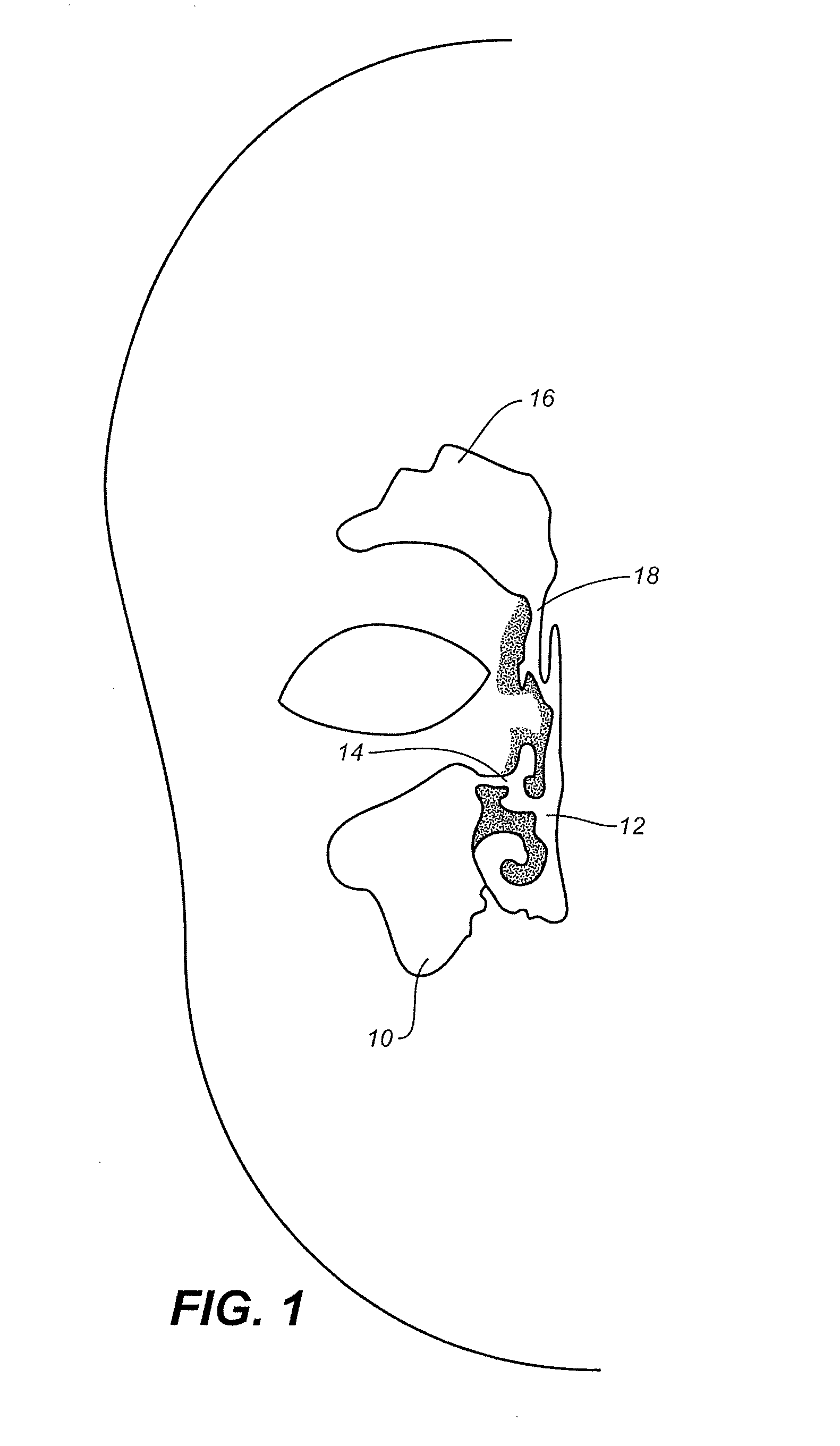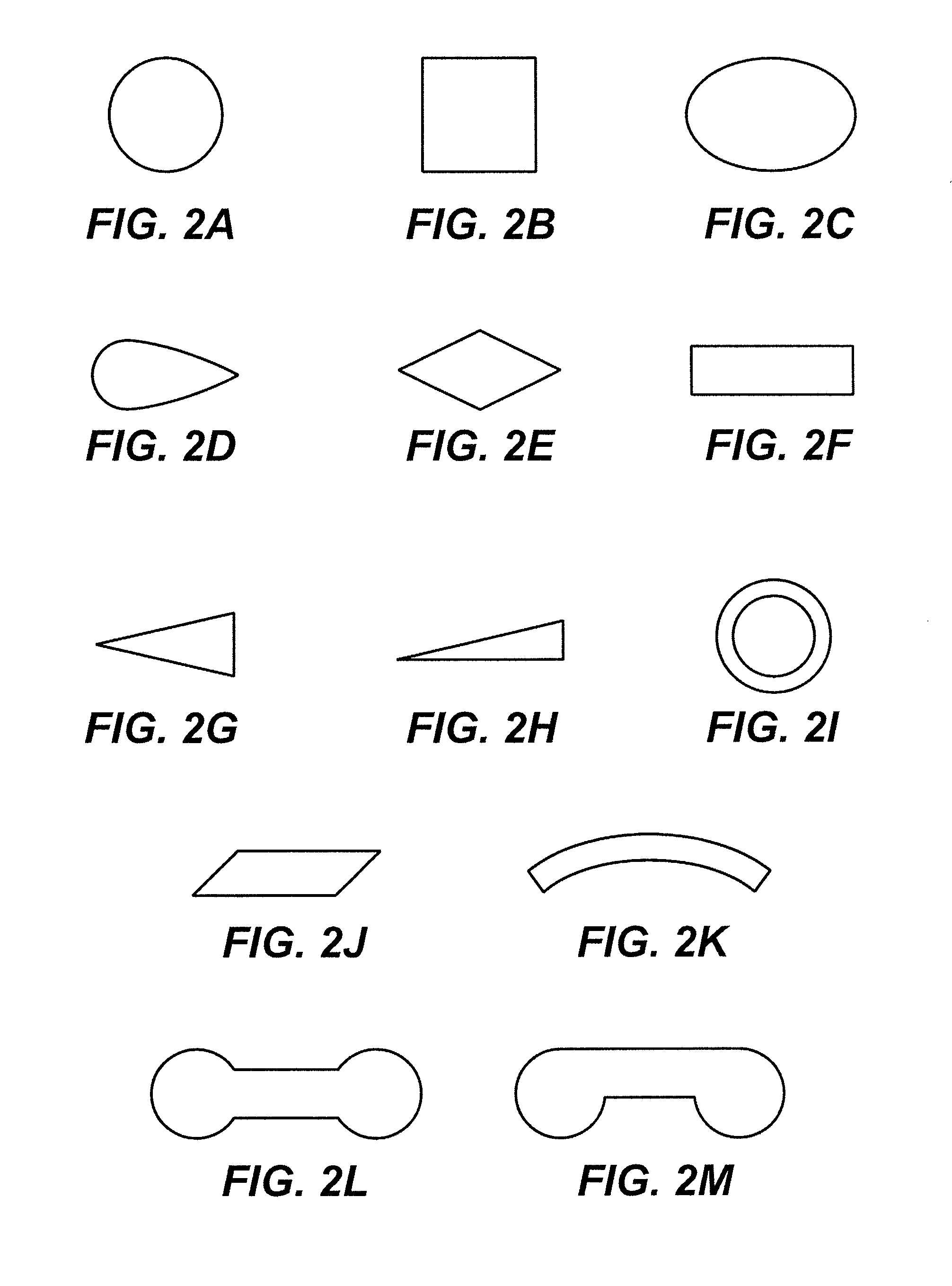Device and methods for treating paranasal sinus conditions
a paranasal sinus and device technology, applied in the direction of antibacterial agents, prostheses, immunological disorders, etc., can solve the problems of fibrosis, stenosis, fibrosis, etc., to reduce the need for surgical revision, prevent, delay, and restore anatomical function
- Summary
- Abstract
- Description
- Claims
- Application Information
AI Technical Summary
Benefits of technology
Problems solved by technology
Method used
Image
Examples
example 1
Melt Extrusion of Fiber Containing 5 wt % Mometasone Furoate
[0135]Extruded ribbon fiber was made with mometasone furoate and poly(DL-lactide-co-glycolide). The desired mometasone furoate content in the device was 5 wt % mometasone furoate. The poly(DL-lactide-co-glycolide) was ester capped with a molar ratio of 70 / 30 DL-lactide / glycolide and had an inherent viscosity of 0.81 dL / g. The inherent viscosity was measured at 30° C. with 0.5 gm / dL polymer concentration in chloroform.
[0136]First mometasone furoate (0.5 gm) and the poly(DL-lactide-co-glycolide) (9.5 gm) were dissolved in methylene chloride (40 gm). A thin film was cast from the resulting solution. The cast film was dried in a vacuum oven for 48-96 hours to remove residual methylene chloride. The cast film was cut into thin strips approximately 10-20 mm wide and 100-150 mm long. Next a Tinius Olsen Model UE-4-78 melt plastometer was used to extrude the cast film strips. The Tinius Olsen is a solid block of steel about 80 mm i...
example 2
Melt Extrusion of Fiber Containing 5 wt % Mometasone Furoate and 2 wt % Triethyl Citrate
[0137]Extruded ribbon fiber was made with mometasone furoate, triethyl citrate (plasticizer) and poly(DL-lactide-co-glycolide). The desired mometasone furoate content in the device was 5 wt % mometasone furoate. The poly(DL-lactide-co-glycolide) was ester capped with a molar ratio of 70 / 30 DL-lactide / glycolide and had an inherent viscosity of 0.81 dL / g. The inherent viscosity was measured at 30° C. with 0.5 gm / dL polymer concentration in chloroform.
[0138]First mometasone furoate (0.5 gm), triethyl citrate (0.2 gm) and the poly(DL-lactide-co-glycolide) (9.3 gm) were dissolved in ethyl acetate (40 gm). A thin film was cast from the resulting solution. The cast film was dried in a vacuum oven for 48-96 hours to remove residual methylene chloride. The cast film was cut into thin strips approximately 10-20 mm wide and 100-150 mm long. Next a Tinius Olsen Model UE-4-78 melt plastometer was used to extr...
example 3
Fabrication of Fiber Containing 2 wt % of Fluticasone Proprionate
[0141]A fiber formulation can be made with fluticasone proprionate with poly(DL-lactide) or poly(lactide-co-glycolide). The poly(lactide) or poly(lactide-co-glycolide) can be capped or have acid end groups. The desired fluticasone proprionate content in the fiber can range from 0.1 wt % to 20 wt %. To prepare a long-acting formulation of fluticasone proprionate, particles of fluticasone proprionate and poly(DL-lactide-co-glycolide) or poly(lactide-co-glycolide) can be dry blended in a variety of ways including the use of a mortar / pestle or by mixing preformed polymer and peptide particles in a V-blender to form a blended powder. Next this blend or admixture can be added to a twin-screw extruder having a machined die with a 2-mm diameter. The temperature of the extruder should be about 120° C. As the fiber is extruded from the extruder, it will be collected on a conveyor belt.
PUM
 Login to View More
Login to View More Abstract
Description
Claims
Application Information
 Login to View More
Login to View More - R&D
- Intellectual Property
- Life Sciences
- Materials
- Tech Scout
- Unparalleled Data Quality
- Higher Quality Content
- 60% Fewer Hallucinations
Browse by: Latest US Patents, China's latest patents, Technical Efficacy Thesaurus, Application Domain, Technology Topic, Popular Technical Reports.
© 2025 PatSnap. All rights reserved.Legal|Privacy policy|Modern Slavery Act Transparency Statement|Sitemap|About US| Contact US: help@patsnap.com



